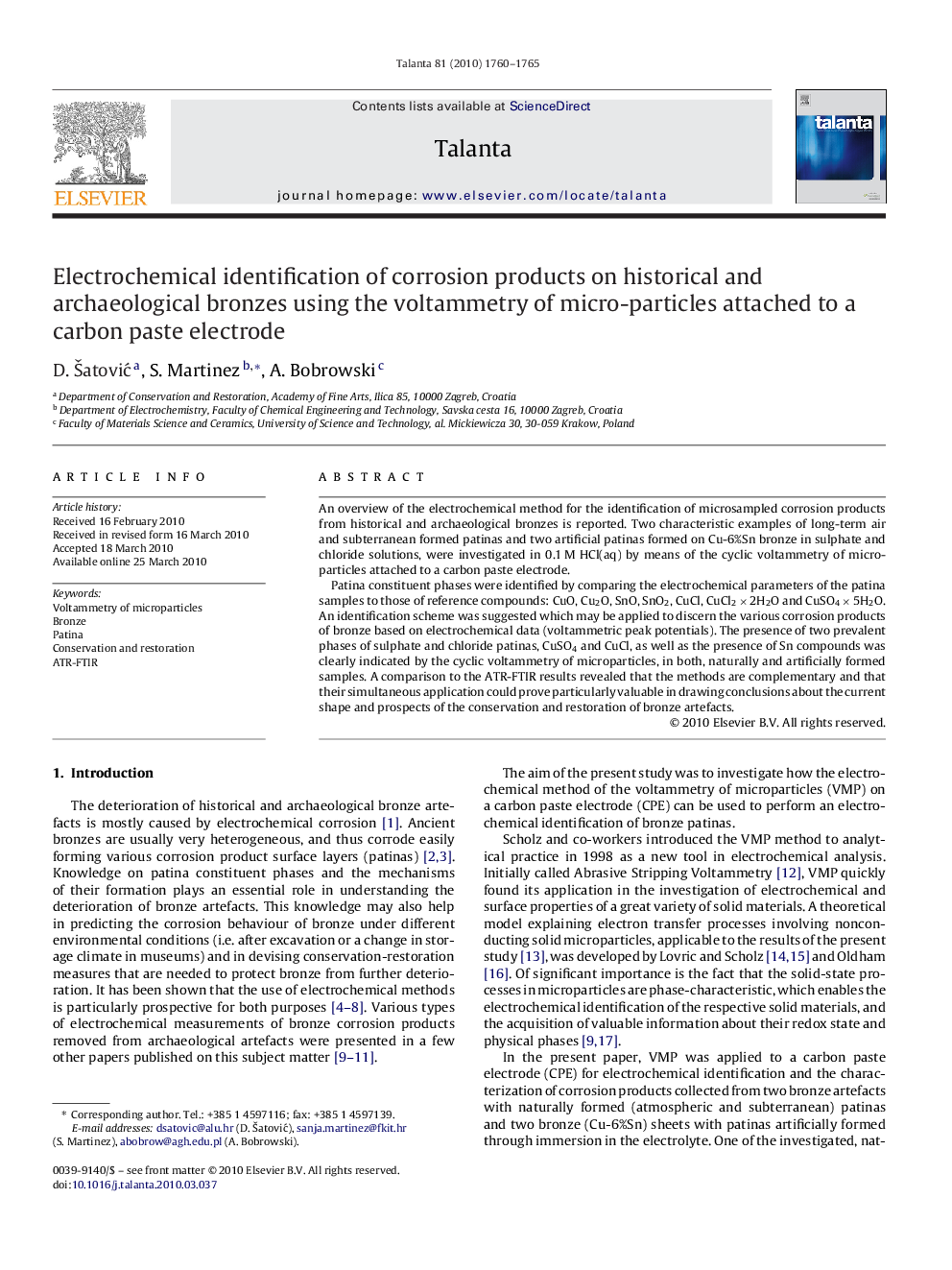| Article ID | Journal | Published Year | Pages | File Type |
|---|---|---|---|---|
| 1242701 | Talanta | 2010 | 6 Pages |
An overview of the electrochemical method for the identification of microsampled corrosion products from historical and archaeological bronzes is reported. Two characteristic examples of long-term air and subterranean formed patinas and two artificial patinas formed on Cu-6%Sn bronze in sulphate and chloride solutions, were investigated in 0.1 M HCl(aq) by means of the cyclic voltammetry of micro-particles attached to a carbon paste electrode.Patina constituent phases were identified by comparing the electrochemical parameters of the patina samples to those of reference compounds: CuO, Cu2O, SnO, SnO2, CuCl, CuCl2 × 2H2O and CuSO4 × 5H2O. An identification scheme was suggested which may be applied to discern the various corrosion products of bronze based on electrochemical data (voltammetric peak potentials). The presence of two prevalent phases of sulphate and chloride patinas, CuSO4 and CuCl, as well as the presence of Sn compounds was clearly indicated by the cyclic voltammetry of microparticles, in both, naturally and artificially formed samples. A comparison to the ATR-FTIR results revealed that the methods are complementary and that their simultaneous application could prove particularly valuable in drawing conclusions about the current shape and prospects of the conservation and restoration of bronze artefacts.
